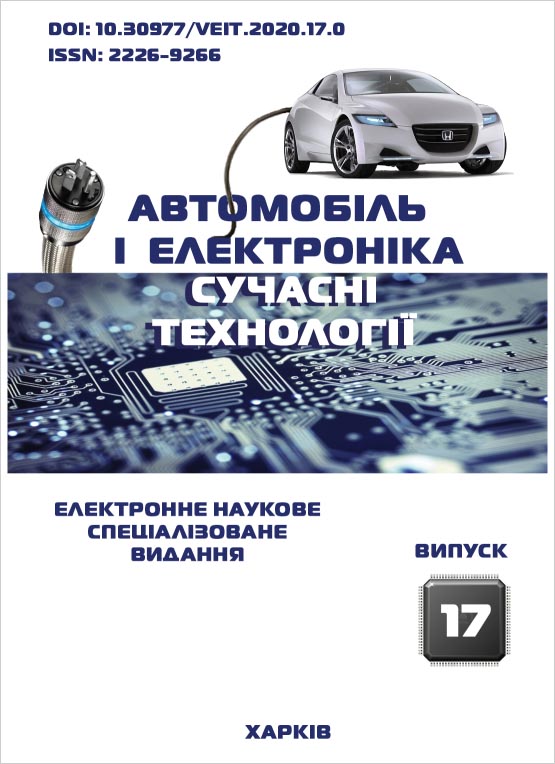Особливості практики викладання англійської мови студентам електротехнічної спеціальності
DOI:
https://doi.org/10.30977/VEIT.2021.20.0.08Ключові слова:
творчість, студенти інженерних спеціальностей, комунікативний, компетенція, успіх навчанняАнотація
Проблема. Зважаючи на те, що електротехніка та електромеханіка є величезною областю знань у світі, а англійська мова є визнаною мовою міжнародного спілкування, знання англійської мови є обов'язковим. Крім того, ми живемо у цифровому віці, а англійська мова є єдиною мовою в останніх версіях додатків, інструкцій та програмного забезпечення. Навчання для студентів-інженерів не англомовних країн дуже важливо не тільки для їх навчального життя, а й для перспективної кар'єри, мобільності та успішного спілкування. Мета. Метою роботи є визначення особливостей викладання англійської мови для студентів інженерних спеціальностей, окреслення техніки та методики організації навчального процесу, аналіз інноваційних технологій навчання. Методологія. Методологія ґрунтується на аналізі існуючих методів навчання, яких багато, порівнянні класичних та інноваційних методів, аналізі стратегії різних методів. У статті підкреслюється важливість креативного підходу до навчання як ключа до успіху. Результати. У роботі надається коротке теоретичне обґрунтування та робоче визначення творчості та мотивації у викладанні англійської мови для конкретних цілей та англійської мови як іноземної мови. У роботі також досліджується роль творчості в контексті змінної парадигми щодо загальної сфери освітньої системи в цілому та вивчення мови зокрема. Оригінальність. У статті пропонується поєднання творчих методів та активних стратегій у створенні кращий умов оволодіння мовою під час занять з англійської мови. Коли ми бачимо, що студенти залучені та мотивовані, це означає, що стратегія працює. Метод, орієнтований на викладача, наразі не вітається у вивченні мови, актуальним є спроба зробити навчання орієнтованим на студента. Практичне значення. Стаття містить деякі практичні поради щодо того, як викладач може створити більше ситуацій, в яких студенти можуть сприяти, ініціювати, контролювати та створювати. Успіх навчання залежить від творчості викладачів та мотивації студентів, це дозволяє знайти нові інноваційні методи викладання в належному поєднанні з теорією мови.
Посилання
Latha, K. (2014). American International Journal of Research in Humanities, Arts and Social Sciences, 7(2), June-August, pp. 122–123.
Dudley-Evans, T. (2001). English for Specific Purposes, in R. Carter and D. Nunan (eds), Teaching English to Speakers of Other Languages, Cambridge, Cambridge University Press. 131–136.
Jeffrey, B., Craft, A. (2004) Teaching creatively and teaching for creativity: distinctions and relationships. Educational Studies, 30 (1). 77–87.
Molnár, G. and Szűts, Z. (2014). Advanced mobile communication and media devices and applications in the base of higher education. IEEE 12th International Symposium on Intelligent Systems and Informatics (SISY), 169–174.
Gu, H., Bo, H. and Ren, L. (2019) Developing ESP Teaching Materials Based on the Analysis of Information Engineering Majors’ Needs. Open Journal of Social Sciences, 7, 121–131.
Ning, H, Hornby, G (2014) The impact of cooperative learning on tertiary EFL learners’ motivation. Educational Review 66(1): 108–24.
Zhang, X., Ardasheva, Y., & Austin, B. W. (2020). Self-efficacy and English public speaking performance: A mixed method approach. English for Specific Purposes, 59, 1–16.
Keane, A. (1999). Communication trends in engineering firms: implications for undergraduate engineering courses. I.S. Gibson. International J. of Engng. Educ. 15, 2, 115–121.
Білан Н. (2012). Комунікативний метод навчання іноземних мов студентів немовних ВНЗ. Молодь і ринок. 5. 149–153. Bilan N. (2012). Komunikatyvnyi metod navchannia inozemnyh mov ytvjdyb[ VNZ. [Communicative method of teaching foreign language to students of non-language higher schools]. Molod I rynok. No.5. pp. 149–153. [in Ukrainian].
Гончаренко Т. (2010). Мотивація вивчення іноземної мови як соціальна функція освіти. Теорія і практика управління соціальними системами: філософія, психологія, педагогіка, соціологія. 4. 47–55. Honcharenko T. (2010). Motyvatsiia vyvchennia inozemnoi movy iak sotsialna funktsiia osvity. [Motivation of learning foreign language as a social function of education]. Teoriia i practyka upravlinnia sotsialnymy systemamy: filosofiia, psykholohiia, pedahohika, sotsiolohiia. 4. 47–55. [in Ukrainian].
Littlewood, W. (1992). Teaching Oral Communication: a Methodological Framework. William Littlewood. Oxford: Blackwell. 108 p.
Goleman, D. (1998). Working with Emotional Intelligence/Daniel Goleman. – London: Bloomsbury Publishing, 385 p.
Michalko, M. (2006). Thinkertoys Second edition, Berkeley: Ten Speed Press, p. 14.
Saienko, N., Semyda, O., & Akhmad, I. (2020). Using social networks in teaching ESP to engineering students. Advanced Education, 7 (14), 38–45.
Pratibha, M. (2019). Language Learning and Teaching Using New Technologies. IRA International Journal of Education and Multidisciplinary Studies, 14 (1), 14-20.
##submission.downloads##
Опубліковано
Як цитувати
Номер
Розділ
Ліцензія
Автори, які публікуються у цьому журналі, погоджуються з наступними умовами:
1. Автори залишають за собою право на авторство своєї роботи та передають журналу право першої публікації цієї роботи на умовах ліцензії Creative Commons Attribution License, котра дозволяє іншим особам вільно розповсюджувати опубліковану роботу з обов'язковим посиланням на авторів оригінальної роботи та першу публікацію роботи у цьому журналі.
2. Автори мають право укладати самостійні додаткові угоди щодо неексклюзивного розповсюдження роботи у тому вигляді, в якому вона була опублікована цим журналом (наприклад, розміщувати роботу в електронному сховищі установи або публікувати у складі монографії), за умови збереження посилання на першу публікацію роботи у цьому журналі.
3. Політика журналу дозволяє і заохочує розміщення авторами в мережі Інтернет (наприклад, у сховищах установ або на особистих веб-сайтах) рукопису роботи, як до подання цього рукопису до редакції, так і під час його редакційного опрацювання, оскільки це сприяє виникненню продуктивної наукової дискусії та позитивно позначається на оперативності та динаміці цитування опублікованої роботи.





